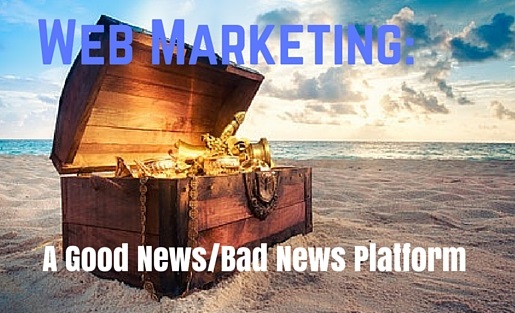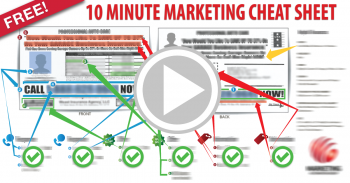Category Archives for Marketing
Web Marketing: A Good News/Bad News Platform
I don’t think it can be overstated that the web has brought with it unprecedented power. The power to reach your potential customer and put your marketing message in front of them cheaply and easily. Everyone is on the web no matter what niche you’re in, no matter your target demographic- they are there and with some trial & error, you can reach them.
That’s the good news. Now the bad news.
Almost no one knows how to market on the web successfully. This problem stems from a few key factors. First off- unless you’re a giant corporation, with an unlimited marketing budget, you cannot use traditional marketing methods on the web (sorry advertising agencies and traditional marketing companies). Anything designed for ‘brand awareness’ or ‘top of the mind’ isn’t going to generate the one thing small business owners and entrepreneurs actually need: customers.
Secondly, as the web has evolved over the past few years, more and more advertisers and ads have crowded the web, driving up prices and making it harder to get your potential customers’ attention. There’s even a condition called ‘Banner Blindness’ now where a percentage of people subconsciously ignore banner ads when they are surfing the web. Add to this the ever changing landscape of SEO (search engine optimization- which as of the time I’m writing this, 3/15/16, is dead, IMHO) as a quick traffic strategy and you’ll begin to see why so many people struggle to get any traction with their web marketing efforts.
So what can you do to enjoy success, while others fail? The answer is simple, but not easy.
To start, you’ve got to use the time tested and proven methods of direct response marketing. The web was literally made for this kind of advertising and it’s what every successful marketer and business owner I know uses. I’ve discussed this in previous blog posts.
The next success tip I’ll share with you is more of a mindset than a tangible thing- but it’s the most important part. You have to approach your efforts at web marketing with the mindset of ‘cracking the code’, and in reality it’s more like a 4-5 different codes. The overwhelming majority of people make a few feeble attempts at marketing online and then quit when they don’t see results. I like to tell my clients that they are mining for gold, and the web has a treasure chest of it- but that chest has a series of combination locks on it. In order to be successful online, you’ve got to figure out (dial in) the combination of each of these locks before you’ll get the gold (almost unlimited clients). Most importantly, you’ve got to have the emotional fortitude to go through test after test, trial and error with unwavering determination.
So what are some of these ‘locks’ you’ll need the combination to? Here’s a quick list of my top 6:
Where are my potential customers online? What websites, forums, etc.
What message ‘words’ will they click on?
What ‘image’ will they click on?
Are the clicks you’re getting from “qualified” prospects?
Can we improve on the “best” performing ads? (increase CTR- click through rate)
And lastly, do the clicks we’re getting convert to paying customers?
There are many more than this quick list but this represents a good start. Keep in mind that the lesson here is you’re always testing, working and refining your online marketing. You need to approach this task as an on-going effort, not a one and done type task.
Keep the right mindset, and your success is virtually guaranteed, because your ideal customer is online and with a little perseverance you will find and convert them to your customer, unlocking that chest of gold.
When you’re tired of beating your head against the wall and want proven, time tested methods and strategies that flat out work- bringing an avalanche of red hot customers to your door, then you need to grab a copy of Automated Entrepreneur Method right now. Save yourself countless hours of trial and error and get the shortcut to success right now.
You’ll also want to attend my webinar where I cover this topic and many more in depth. You can register for that here.
Yours in Profit,
Bob
The Power of FOCUS
 If there’s one thing that I can say is the single biggest factor to a person’s success- it’s their ability to FOCUS.
If there’s one thing that I can say is the single biggest factor to a person’s success- it’s their ability to FOCUS.
A few years ago I learned that the word FOCUS is an acronym meaning: Follow One Course Until Successful.
This may sound easy, but in reality I’ve found it to be very difficult, especially when it comes to building your business.
In any given business, on any given day, there are just too many things to focus on, too many things pulling you in all different directions. Things like accounts receivable (getting paid), accounts payable (paying bills), employee or contractor management, product development, fulfillment, customer relations, brand messaging, payroll, cash flow management and many, many more… And yet none of these activities, all demanding your attention, address what Michael Gerber identified as the most important. None are working ‘on’ your business. They are all working ‘in’ it.
This is where the power of FOCUS comes in. If you want to rapidly scale your business from 6 figures a year to 7, you must focus on the activities that build your business, not just manage it.
What are some of those things?
My favorite, and I believe the most important, is marketing. As I define it, marketing is everything that causes a potential customer to notice you and causes them to want to choose your business over anyone/everyone else.
I’d like to say that until a business has figured out how to attract a constant and predictable flow of high quality customers, ready to do business with you, you shouldn’t be focusing on anything else. Sure paying the bills has to get done, as do many of those other ‘in your business’ activities, but none really matter until you’ve got loads of people waiting to give you their money.
FOCUS on that first, and keep at it until you’ve achieved that goal and I guarantee you’ll have a 7 or even 8 figure business very soon.
If FOCUS is a challenge for you, and you’d like specific, and proven marketing methods, strategies and tactics that deliver top quality customers to your business 24/7, then you’ll want to get your hands on my Automated Entrepreneur program right away. You can learn more proven FOCUS techniques and killer marketing strategies on my webinar, that you can attend for free, just register here.
Yours in Profit,
Bob
The “Hidden” Mindset That Holds You Back
 In my many years of working with business owners & entrepreneurs, there’s
In my many years of working with business owners & entrepreneurs, there’s
one thing that I’ve found destroys more dreams, crushes hopes and derails
success more than just about anything else.
What’s that one thing?
Victim thinking.
This problem is so pervasive and so insidious that the people who suffer from it
almost never fully realize the grasp it has over them.
And the opposite is true as well. The people who are most wildly successful
are the ones who don’t suffer from this alignment.
Let me share a story that I think illustrates this beautifully.
When I was first getting into marketing, I had a mentor and a coach. He was very
successful and had made millions. I was dead broke but ambitious. My mentor
told me I needed to develop a marketing piece that would consistently drive in new
business. He gave me some general guidelines but left the rest up to me to create
the offer, write & design it. Took me a couple of months of hard work but eventually
I had something I thought was pretty good. I sent it to him to critique and he gave
me a few suggestions and told me to let it rip. Excited, I spent money I didn’t have
and mailed out thousands of these pieces only to get virtually no response. I didn’t
realize it at the time but this was a pivotal moment for me. When I called my mentor
and told him of my failure, his response startled me and he said ‘that’s great’. Obviously
I didn’t feel great. I was deeply in debt and now a little deeper. When I asked why it was
‘great’ he said because ‘you found something that didn’t work so now you’re one step closer
to finding one that does.’ Mentally this was a reach for me but thankfully I embraced this
way of thinking and I decided to keep testing and failing until I figured out what worked.
I’d like to say it was the second time, third, fourth or even fifth- truth be told I think it was
about the fifteenth. I say about because I quit counting and I focused all my attention on
cracking the code and finding success. And when I found success it hit like tidal wave. I ended
up creating a marketing piece that to date has sold over 100 million in services- it’s a whopping
success.
But here’s the most important part of this- it was very tempting to say to my mentor,
after my failures, ‘aren’t you a marketing expert- you should know what works and give me the solution!’
this is what people suffering from victim thinking think & say. They fail, then they quit. And on to
the next thing looking for the solution. They blame the failure on someone else. They never put in the
effort to seeing something all the way thru to success. They are only committed as long as it’s easy
and effortless.
As a coach and a mentor now myself I’m keenly aware when someone has adopted this attitude
and is heading toward failure. When you’re fully committed to an outcome, you’ll find it no matter what.
This is why I have clients who become rich following my advice and others that have failed and quit.
In the end, it comes down to their attitude. Successful people realize it’s a process- a journey,
and they will not be denied. Victims blame others and everything else.
Let this be a reminder to never be a victim and embrace the mantra: if it’s to be, it’s up to me.
And get to work. Do that you and you will not be denied.
Yours in Profit,
Bob
***
360 Packetts Landing Fairport, New York 14450 United States (585) 633-7563
Content Marketing—What Should it Mean to You?
 We talked about CRM earlier—now I’m going to talk about CM, or content management.
We talked about CRM earlier—now I’m going to talk about CM, or content management.
Not only is content management driving marketing efforts these days, but CM is big business—providing work for lots of people along the marketing and customer service pipeline.
There are many types of content—but first, what is it? Here are a couple of points to keep in mind:
- Content takes many forms and is used throughout a small business, or organization.
- High quality content is important. The days of copying articles from other websites and posting it up on your own site are done.
- Content gives you the chance to create, nurture, and maintain contacts with customers, and future clients.
So, content marketing is pretty much the business of using different types of content to get your message across to your audience, and even, to your competitors.
Content marketing is mostly conducted online—helping you attract targeted leads. Maybe you remember buying bulk mailing or email lists? The days of casting a big net to see what swims into it, are done too. Content marketing means crafting a unique message for just the right kind of customer.
Types of content that could help—and how you use it
If you are an entrepreneur, it is likely you run a pretty small shop. Small- to medium-sized businesses cannot afford a whole team of marketing people on the payroll.
Since marketing is now the bigger part of sales, blending these efforts is essential. Consider outsourcing your marketing needs to a specialist you can use to create a targeted content marketing strategy—and execute on it. Outsourcing is also a super idea for creating content, because an outsourced specialist knows how to write, and create, the content you want.
While you need to deeply engage in developing a marketing strategy that works best for your small business, this does not mean you have to create the content. As I have said many times before, only do the work that only you can do.
Basically, your focus as a small business owner is to create interesting, focused content, make sure it is optimized for the web, and manage social media channels. What you do depends largely on your budget, your goals, and your audience.
Here are some different types of content that could work for you:
- Education: Consumers are doing their research before first contact with your product or service. They may have visited half a dozen websites and done some reading before they landed on your website. Offering good quality, compelling information that helps them make the right choice is the first step toward selling them on your product or service. Consider tip, or fact sheets, “How-to” pages, and links to offsite resources either that you authored or that you believe are authoritative on the subject.
- Short and long form information: A blog is a great way to serve many aspects of your business. Whether you offer information, create and communicate your company culture, discuss a recent customer service issue you solved, launch a new service or highlight an older one—a blog is an effective communications medium that serves you as long as you serve up fresh, high quality content. Feed your CRM machine by offering longer form content that is accessible only upon registering with name, email and other details that help you create a consumer profile. Create visually interesting, informative white papers and other materials that offer a look at your product, industry, or what is currently trending.
- Service: Include case studies, tutorials, YouTube content, testimonials, step-by-step, and other material to help potential customers understand exactly what value you offer, and why it will work for them. Be sure your customer service is transparent and speedy—think Amazon.com.
- Make it interesting: Don’t think the only thing you can use is a blog and text. Use infographics, podcasts, livestreamed video, cartoons, animation, slide share and more. Invite guest blogging and learn about user-generated content to help convert leads to loyal customers.
There are different kinds of content that could be right for your business. You don’t need to use everything, but you’ll want to mix it up to keep your audience—and customers—interested.
The most intriguing content in the world won’t mean anything if you do not have a strong marketing strategy, the right value proposition, and the message that puts those together in an unbeatable way.
I use experience, software , and know-how to help my clients succeed. I work with small business owners to create the message, and the business climate, to give your business the boost it needs—and the profit you want.
When you want to dig in to more money at the end of each month, give me a call at 585-633-7563.
Yours in profit,
Bob Britton
Getting Started with CRM
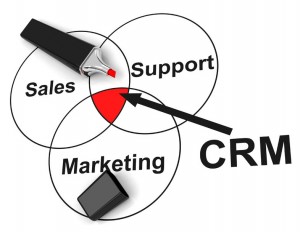 If you are an entrepreneur who is not currently using customer relationship management (CRM) software, you will be soon. Why? Because it saves you time and boosts your profits.
If you are an entrepreneur who is not currently using customer relationship management (CRM) software, you will be soon. Why? Because it saves you time and boosts your profits.
I am an expert on small business growth. My work with individual clients, and with groups, helps them become millionaires. Think about it—wouldn’t you like to make more money, and do more of what you love? At the same time, you can do less of what you don’t want to do. That could be done by someone—or something—else.
We talked last time about the different types of data and how data helps your business. But how do you manage your data in a meaningful way? That is where CRM comes in.
Learning about CRM is one of the first steps I recommend to my clients. Many small businesses get by initially by using a spreadsheet and an email list. Grow a bit, bring on a sales representative, or start getting some traction in the market, and you’ll find that keeping track of things on paper is not so easy.
Plus—storing dates, details, and customers is not the same thing as nurturing leads, activating your sales funnel, or engaging established customers.
Your CRM: What can it do for you?
In the last decade, the business of marketing has changed. While marketing used to be placing general ads, sending out brochures, and a hit or miss approach, personalization is the name of the game today. The better you capture individual consumer practices and preferences, the better able you are to meet client needs. How?
Your CRM software can handle a great deal of the labor that used to take marketing personnel many hours. From keeping track of important contact and sales information, to creating a dynamic web experience for new visitors to your website, CRM packages capture, store, and infuse your sales strategy with the information you need for leads to become conversions.
Here are some key capabilities of CRM software:
- Improve the view: With the move toward personalization, and a unique customer experience, one objective of CRM is a 360-degree client view. Because you no longer waste money on print ads, expensive brochures sent to a stale mailing list, or cold calls to uninterested consumers, the customer journey now takes center stage. When you use CRM software, you create customer profiles that allow you to segment your client base. Segmenting lets you create marketing plans for different client groups. CRM allows you to identify premium customers that pay more for the service, or product, you offer. Define those leads—or that portion of your customer base—and you have taken a first step to cultivating, capturing, and nurturing repeat business from high-margin clients.
- Keep clients on board: Customer retention is important. Spend less time creating new sales by maintaining your client base. Regular clients are more likely to buy more of your product line—and need less discount incentive to do so. Upselling is also easier with an established, satisfied customer. CRM software identifies those important clients, helps you schedule routine follow-up, and personalizes your relationship by noting important dates to send a card, gift, or discount offer.
- Targeting: Increase your revenue by ramping up your marketing strategy. By collecting data and creating focused campaigns, you push your sales message to leads, and customers, to sell your products and services. Your CRM software strengthens overall customer service since marketing and sales personnel have access to the same, fresh data. CRM software contributes to better service, higher standards, less intensive sales needs, and dynamic, focused sales campaigns. What’s not to like?
Can you take personalization too far?
Storing and using personal data can help you offer better value on a more personal basis, but be aware of some common errors using personal information:
- While most people appreciate the personalized touch, some people are concerned with privacy issues. Align your personalization with the relationship you have with each customer. Even if you have the information, resist the urge to walk up to a stranger in your store and greet them by name—unless they registered with your brand beforehand.
- Be careful of collecting information related to health, medical, or other concerns. Personalization could lead to large, hurtful blunders that could cost you a customer, and a black-eye, on social media.
- Use your data wisely. Personalized targeting works when it is appropriate, like when a potential customer is clearly investigating your website, and makes return visits. Consider this scenario—a person registers to download one whitepaper. They immediately receive one email, followed by scheduled, clearly canned emails that increase the intensity of their call to action with each email. They also receive unsolicited tip emails for which they did not sign up. Sound like good use of personalization? No thanks!
When you have questions about aligning your marketing data, business processes, and CRM software to boost your revenue, I hope you will call me at 585-633-7563.
Yours in profit,
Bob Britton
New Year—New Opportunity to Make Your Data Work for You
 Happy New Year! Is this the year you want to make a million? It is all about numbers.
Happy New Year! Is this the year you want to make a million? It is all about numbers.
Sound confusing? Don’t worry. In the next couple of blogs, we’ll talk about what numbers and Big Data mean, and get you on the road to a more profitable 2016.
If we haven’t met, I am an entrepreneur and business growth authority who built several successful businesses. Now I consult and run business groups to help other small business owners learn how to work smarter—not harder.
The beginning of a new year is a great time to take stock of what works—and what does not work—for your business. It is not a good time to throw money at whatever marketing method catches your eye. As I talked about before, shiny object syndrome can cost a lot of money, without offering much in return—especially when you are determined to make a change in your business.
What am I talking about? Let me tell you about the most common ways people lose money trying to find new clients or customers:
- Print ads and expensive brochures: Think a general print ad is going to help you gain more business? It might, but it probably won’t unless you know your message, and are delivering that message to folks who are interested in what you have to sell. The days of large runs of expensive printed brochures are done. Order less and develop your website.
- Online advertising: A specialty by itself, Facebook and other online ads may not pay off. Ad blocking is popular. Unless you have the numbers at the end of the day to show the campaign was effective, you are pouring money into the street.
- Fly-by-night marketing help: So you know you need to brand, or rebrand, your business. Or, you are painfully aware that you need to kick-start your marketing capabilities. You meet someone, who knows someone, and can help you with a boilerplate marketing kit. It fails, and you are out the $5 or $10K you really needed to identify, attract, and cultivate new leads.
You don’t get the customers because you threw your marketing budget at the crowd. There are at least two ways to make money. One is putting the right plan in place to ensure your service or product is continually reaching new potential leads. The other is making smarter use of the money already present, or already being spent to run your business.
We’ll talk about getting new leads first.
How does data get the customers you need?
A lot of entrepreneurs recoil at the word “data.” What is it? It is knowledge. Knowledge of who might buy your product or service, and what they will pay for it. It is knowledge of the economics and geography of where you are trying to do business—whether it is local, or on the web. It is knowledge that gives you the edge as you cultivate a lead into a converted, long-term client. You need data.
Data-driven organizations make more money, because they have the knowledge of where to place their confidence—and their marketing budget—to generate business. There are a couple of different kinds of data, including:
- First-party data: First party data is gold. This is free information you own and control that results from your own efforts to capture contact, demographic, and other information about your clients, and customers. When a customer engages your services, it is routine to collect that information within the parameters of the privacy policy of your business, or website.
- Second-party data: Much lesser known, second-party data is likely to become a marketing powerhouse in the next couple of years. As small business owners get smarter about cultivating their first-party data, and run into privacy and quality issues with third-party data, entrepreneurs are turning to second-party data.
What is it? Second-party data is just the first-party data of someone else. When you share your first-party data with a unique business partner, you gain access to information that can help you refine your customer profile and better target offers your customers receive online, or via mobile. Since you are sharing, there is no cost to obtain the information. For example, you might share, within the limits of your privacy policy, information with a nearby retailer who serves your desired customers. By sharing high-quality information, you, and your partner, develop a valuable marketing cross-channel that is better than what either of you had alone.
- Third-party data: Gained from behavioral, statistical, and other types of modeling, third-party data is aggregate information from a number of sources. Sometimes expensive, sometimes cheap, there is plenty of third-party data to be found. While the seller may guarantee the data suits your audience segment—the information may no longer be fresh, or accurate.
You also need a way to manage and cultivate your data. You can use any of a number of customer relationship management (CRM) systems. I have a lot of success with Infusionsoft.
When you want to put the right plan in place, or develop better marketing and business process—call me at (585) 633-7563, or check out one of my groups. Starting this year, my goal is to make you a millionaire.
Yours in profit,
Bob Britton
Turn the Tables on Negative Internet Comments
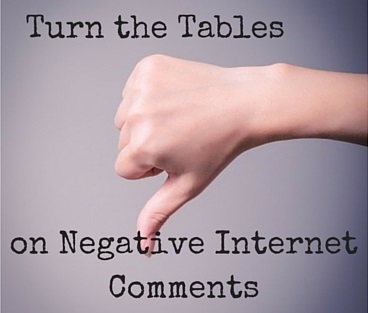 When is a negative internet comment not such a bad thing? The answer—when you use it to your advantage.
When is a negative internet comment not such a bad thing? The answer—when you use it to your advantage.
I talked before about the importance of reputation management. For the small business owner, the word on the internet can make or break your business. You have to be on top of it. That means vigilance. While there are a number of tools to help you track comments made about your business or brand, Google Alerts is easy and free. If you are not using it—you should.
Let’s say you do all the right things. You are using CRM software, you have a great business plan, and a tight storefront with well-trained, engaged employees. Super. Things will never go wrong—right?
That is incorrect. No matter how well you run your business, there are going to be mistakes, a customer or client is going to get left out in the cold—and they are going to complain. Trust me. As an experienced small business owner, I know the pain of mistakes that just should not have been made.
Sometimes, though, there was no mistake. You just have an unhappy client, or someone trying to stir up trouble for your business. Does it happen? A lot.
Take advantage of a poor review
We already know that online reviews are important. People believe what they read, often without considering the credibility of the reviewer, or the circumstances behind a complaint. So let’s take a look at how to turn a profit on a bad situation:
- First rule? Do not ignore a complaint: Squeaky wheels get grease and a lot of play on the internet. Ignoring a problem, and hoping it goes away, is a fast way to lose money and hurt your reputation. Remember—people do not often question the credibility of someone who complains. So why respond to people who don’t have anything nice to say? Because you can use the exposure.
- Free publicity is not a bad thing—especially if it gives you a chance to look good. So look good. Because you are monitoring your online reputation, you know right away about the problem. Gather as much information as you can, but intervene quickly on social media. Respond to your accuser by owning the problem—and ask for more information. Do not create a reason for the error—just own it. “I understand you are unhappy about how you were treated, and I want to make that right.” Step up to the problem—absolutely, and quickly.
- Do not delete: Deleting a comment is possibly worse than ignoring it. It shows you saw it and are not taking action to address the problem.
- With bigger or business process problems, you are probably getting more than one complaint, and word spreads fast. Post a note on your website, or via social media, or tell customers you are aware of the problem and working to resolve it. After you have corrected the problem, take the opportunity to briefly discuss the problem, but take more time to talk about how you fixed it. Make it a case study in how to do things right. Add an apology and a discount, coupon, or other perk, to help your customers feel like they were part of the solution—instead of the problem.
- What if someone is targeting your site, or establishment, on social media? Your best defense is an honest response. If your attempts to resolve the problem or the complaint are rebuffed, use social media to show all you do for your clients. Restate the complaint you received, mention what you did in response, and how you offered to resolve their difficulty. The people you want as customers or clients will see and consider your response. They will also see the complainer as unreasonable if you did your best to respond in good faith.
You cannot please all of the people all of the time. But when you treat people who complain with respect, courtesy, and generosity, they usually respond in kind.
After you resolve the situation, take advantage of the feedback to take a hard look at what you could do to avoid a similar complaint or mistake. Complaints are just outside interests helping you troubleshoot your own business—take advantage of the information, and the opportunity.
As a small business owner, I know how to turn the tables on hard times to help you earn your first million. Get a super start on the New Year by attending one of my free webinars, or give me a call at 585-633-7563 today.
Yours in profit,
Bob Britton
Looking Ahead: Small Business Tips for 2016
 It is that time of year—top ten lists, countdowns, and trends to watch for in the coming year.
It is that time of year—top ten lists, countdowns, and trends to watch for in the coming year.
While a crystal ball is always handy, business success is really no mystery. In the current economy, it takes more than hard work to succeed. By succeed, I mean earning enough revenue to really thrive, not just survive.
To me, putting my clients on the road to becoming millionaires is my definition of success. It isn’t luck—it is having the smarts and experience to take advantage of opportunities, and efficiencies that could be right in front of you.
Here are my top six picks to boost your success in the 2016.
- Climate change: To support economic recovery, interest rates have been rock bottom for some time. The Federal Reserve is expected to raise interest rates—soon. Take time now to assess how a small increase in interest rates will impact your price of doing business. If your business is reliant on credit, the cost of borrowing will increase.
Depending on your product or service, sales could go up or down. The National Association for Business Economics (NABE) predicts mild economic improvement in the next few months, and into 2016. At present, employment rates are expected to continue to improve through the end of next year. Even without robust growth, this improving economic picture bodes well for small business owners.
- Business tech: Fast, seemingly inexpensive delivery, like Amazon Prime, changed the look of customer service. This is going to continue to have a big impact in 2016. A November article in The New York Times states, “Growth in Prime subscriptions matters because Prime alters the psychology of shopping. Once you’ve prepaid for shipping, you tend to start more of your shopping excursions at Amazon.” By the end of 2016, Amazon Prime membership is estimated to be around 50 million, up from 30 million at the beginning of the year.
Notes one analyst, “So what’s the differentiator at this point? It’s selection. It’s service. It’s convenience. It’s how easy it is to use their interface. And Amazon’s got all this stuff already. How do you compete with that?” Your differentiator drives your business—know what makes your product, or your service, worth buying. Plus, tech—like your ordering interface, marketing automation, and CRM—is going to improve and make your life easier if you know how to exploit the capabilities. Use marketing automation tech to target and personalize—a practice I think is going to get even bigger in 2016.
- Service! You know I talk about this all the time. Offer better service, drive a fair bargain for a premium product and make the money you want. You need a great business model, sure, but sales and marketing are all about perception and customer satisfaction. Meet a need and take care of your client—it never goes out of style. So you should expect to work harder at one-on-one lead nurturing and customer service in 2016.
- Social media just keeps on going: Look for social channels to expand search capabilities and other services in the next year. Why leave it to Google? Small business owners need social media both for local interest and national profile. Find and work your channels—LinkedIn for networking and guest blogging, Pinterest for products, Twitter for profile—and shorten the distance between you and a new customer. Engage your employees through internal social media and let them be brand representatives on your company blog or their Facebook page. Spread the word in 2016!
- Mobile: Everyone agrees that digital marketing is only going to get more important. Be sure the content on your website is high quality, and fresh. Pay attention to SEO and be sure to push content to social channels as soon as it is published. Make sure your website design is responsive, use big buy buttons, and make your interface or app easy to use—and easy to shop.
- Cybersecurity: With new hacks reported in the news on a weekly basis, cyber intrusion cannot be ignored by small business owners. Whether you are hacked directly, or your business is compromised by a vendor partner, take a strong look at your data and online security. Employ IT security specialists to help you build a secure system, keep it up to date, create a password policy, and use good online hygiene. Everyone, either directly, or on the periphery, is a cyber target. It is going to be more important than ever in 2016 to be sure your data, brand, and reputation are safe.
Resolve to earn the revenue you really want in 2016. When you have questions about how you can earn more for doing what you do best—call me at 585-633-7563.
Yours in profit,
Bob Britton
Trends and Tips in Inbound Marketing
 Throughout my career as a small business owner, I had the same marketing and productivity questions that my clients ask me today. I have been there—and I know what you are going through. You work long hours, have a great product, but your revenue just isn’t enough.
Throughout my career as a small business owner, I had the same marketing and productivity questions that my clients ask me today. I have been there—and I know what you are going through. You work long hours, have a great product, but your revenue just isn’t enough.
To correct this situation, inbound marketing is a must—and it doesn’t end there.
Marketing process—what’s in a word?
What do I mean by inbound and outbound marketing? A lot of small business owners are confused about web lingo. Conversions, lead generation, inbound and outbound marketing are all terms used to discuss getting more customers for your business, and increasing your revenue:
- Inbound marketing: From a computer, or via mobile, the web is usually the first place people look for information about goods and services. Your website is a critical piece of your marketing strategy. Inbound marketing attracts people already interested in your topic, product, or process. By offering informative blogs, tips, and other fresh data, your website works to convert website visitors to clients. To do this, your website should consists of search-engine-optimized (SEO) content, design, and keywords.
- Outbound marketing: Outbound marketing also helps you fill the top of your sales funnel. Think of the traditional methods, like cold calling, email campaigns, business and client networking, advertising, and referrals. These are important tools that may be more appropriate for your product or service than inbound marketing.
- Lead generation: Inbound and outbound marketing work to create active leads, or potential clients.
- Conversion: The process of turning an active lead into a paying customer is a conversion. For some businesses, conversion may take forms other than making a cash sale.
The importance of positioning
For you to allocate resources to marketing strategies, it is important to know your position—in the market, in the business lifecycle, and in your industry. A big part of my work with clients is helping them see their position, as well as what direction they need to go to achieve their revenue goals.
Once you have the bigger picture, you can drill down into techniques to help your bottom line. A super report from Hubspot offers marketing strategy information from the last half of 2015. Some key points of the report include:
- Inbound marketing is the top tactic for companies and small businesses. For companies with between one and 200 employees, vigorous use of inbound marketing and web strategies builds their brand and profile and keeps marketing costs down. Larger companies with deeper resources tend to employ inbound and outbound strategies more evenly.
- Small- and medium-sized businesses are growing—and looking for cost-effective ways to increase leads. But the priority is on turning those leads into paying customers. For entrepreneurs, you have to be able to measure the return on your marketing dollars—and prove your ROI for the budget spend.
- Inbound marketing works across industry, including non-profit, B2B, and B2C. Traditional outbound marketing methods cost more and achieve less ROI when compared to inbound marketing.
- The creation of inbound marketing content, like blogs, articles, whitepapers, and tip sheets is moving out of the business and into the hands of freelance writers and agencies. This makes sense as lean marketing and production strategies call for the right people doing the best job. As I have said before—make sure you are doing the job only you can do. When appropriate, outsource the responsibilities better suited to others, like content creation.
- Prime marketing strategies have already shifted. More than 55 percent of businesses who earned higher ROI on their marketing budget in 2015 say paid advertising, whether in broadcast, print, or social media, is the most overrated marketing path at present.
- Successful marketing means using both CRM and marketing automation systems.
You have a lot of leads—and then what?
With the rush to generate leads, some entrepreneurs forget to close. I am a big fan of marketing automation and CRM software, to identify, nurture, and convert leads. When marketing and sales teams are coordinated, the same software helps me maintain those clients and fine-tune my services to better obtain and serve customers. Internal service level agreements (SLAs) define responsibilities and outcomes for both groups.
Whether your marketing and sales teams are sizeable, or small, cooperation is fundamental to business growth and success. I work every day with entrepreneurs that have misaligned marketing and sales priorities. We explore ROI on all marketing efforts, and create the right plans to make sure your inbound marketing ultimately brings in the revenue you want.
When you have a question about marketing automation, or you need someone to reboot your marketing strategy, call me at 585-633-7563.
Yours in profit,
Bob Britton
Holiday Sales? Bah Humbug!
Okay—everybody loves a sale. But if you are depending on deep discounts to sweeten your business bottom line this season, think again.
Black Friday sales are legendary. Did you fight crowds to score a big screen television from Walmart for a 75 percent discount last week? “Black Friday” used to refer to a blockbuster shopping day that boosted business owners into the financial safety zone. But now there is Black Friday, Small Business Saturday, Cyber Monday—and a whole lot of discounting in the weeks leading up to Thanksgiving, and after.
Consumers now expect super sales throughout the holiday season. So everyone expects to pay less for whatever you have to sell. As an entrepreneur, does this sound like a great way to make money?
My business is doubling—if not tripling—the revenue of my clients. I work with entrepreneurs in all kinds of businesses. Some are well-established, while some are start-ups. As a small business owner several times over, I have seen my own businesses struggle and then thrive. So I know what it takes to succeed—and it is not the magic of the holiday discount shopping season.
Can you buck the holiday discount trend?
Outdoor outfitter REI did not open on Thanksgiving—or on Black Friday. Instead, the retailer closed all 143 of its stores and put a “gone fishin’” banner on their website that read, “We’re not here. Today we’re closing our doors…We hope you’ll join us outside today. You can still shop our site. We’ll start on your order first thing Saturday morning.”
While other stores pushed back on Thanksgiving openings, REI took it the extra mile. But consider this:
- REI is a lifestyle brand.
- REI is not making most of its money from mass merchandising. Unlike big box stores, REI has a somewhat exclusive niche market.
- If you chose not to join REI outside, you could still shop its website.
While only overall holiday sales numbers will tell—it is possible REI may have found a way to market its lifestyle message in a powerful way.
Black Friday, for most retailers, is about dropping prices on inventory low enough to attract bargain hunters. For many small business owners, if you do not offer rock-bottom prices, shoppers shrug and go down the block to another store, or big box that does. REI opted out of that traffic. Black Friday, or holiday discount—cutting your profit to bone is not going to boost your revenue.
What kind of customers are you looking for?
One of the first mistakes made by a lot of small business owners is to try and compete on price. Sure, you might get a few more customers, but they are the wrong kind. Bargain hunters are not loyal, and you cannot make a living—let alone a million dollars—offering bargain basement prices, unless you have an unusual product, or a high volume business.
In a LinkedIn blog post, Michael Silverstein, Senior Partner at Boston Consulting Group (BCG) writes, “Black Friday shoppers are your worst customers. Fire them and concentrate instead on your best customers.”
What does he mean?
He means you need to attract loyal customers—not high volume foot traffic looking for close-out prices. Your target is the client or customer who shops your business, or uses your services, throughout the year, not just when you are running a promotion. How do you identify these customers and keep their business?
- On the data side, use marketing automation and other reports to identify your loyal, repeat customers.
- Price your products and services so that you are making the profit you need to thrive. Evaluate your customer journey to ensure customers are getting a value proposition that equals the money they spend to patronize your business.
- Cater to clients who do not quibble about your price, but who appreciate your product, and the extra service they receive as a result.
- Develop programs and processes through which these clients are recognized and rewarded when they use your services.
- Take big advantage of digital tools like apps, and social media, to engage followers on channels like Facebook or Twitter. Keep your brand and profile fresh, and offer deals you can afford to those who you really want to attract.
Plan now and stay ahead
Thinking ahead helps you stay ahead. How can you make your business easier to find? What tech is right to manage client communications and promote your product? How can you meaningfully connect with your customer base to learn their needs and meet their desires?
Stay ahead of the curve to ensure your customers feel good about paying a price for your product that keeps them happy—and you earning the right revenue.
Constant stress and a minimal income keep you from the success you deserve. When you want to kick-start your business and marketing strategy, I hope you will call me at 585-633-7563.
Yours in profit,
Bob Britton
